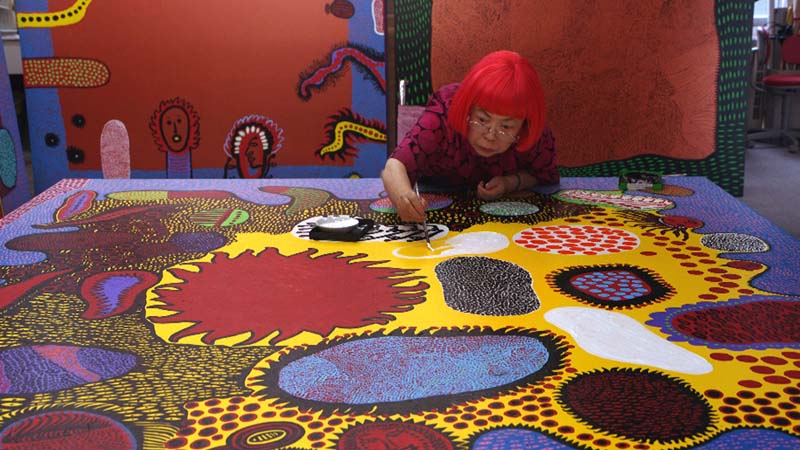
Japan, the world’s second largest content market after the U.S., stands to benefit most from China’s current freeze on all things Korean, including (much to Korea’s dismay) drama series that were fetching US$400,000 or US$450,000 an episode. Although this started happening in 2016, China’s full-blown displeasure at Korea’s commitment to the U.S.-backed THAAD missile defence system firmly kicked in in 2017. What happens next is at the top of our watchlist for this year.
According to IHS’s 2016 World TV Production Report, Japan’s TV programming spend (original and acquired) in 2015 was US$9.8 billion, well ahead of China’s US$8.4 billion with South Korea trailing in third place at US$2.6 billion. Japan has an 8% share of global TV spend, equal to the U.K. The U.S. leads with 33%.
While it’s too soon to put a value on the impact that the Korea/China tension will have on other players, Japan’s shifting environment – including healthy slates of high-quality drama and more outward looking domestic players – mean Japanese rights holders are well-placed to step into the gap.
But the Japanese market is not without its usual challenges, led by age-old rights issues that are hobbling digital distribution efforts abroad.
Say “Johnny’s” to anyone involved in Japan’s production scene, and the response goes something like: “Ah, you know about Johnny’s”. Indeed. And the knowledge is spreading as streaming platforms up and down Asia and the rest of the world dig into every corner everywhere for unexploited rights to quality drama.
Johnny & Associates is an all-powerful talent agency whose 55-year reign over the creme de la creme of Japan’s male singers and actors
remains absolute and challenged at great peril. In short, what the agency says goes. And the agency says no on-demand streaming/online/OTT rights to outsiders. In an environment where international buyers need on-demand/streaming/digital rights, the result of Johnny & Associates opposition is limitations on international licensing potential for content with one of its stars.
Few expect this to change any time soon. But the effort to shift hearts and minds is ongoing, and buyers note progress in the rights clearance process in the past few yea...
Japan, the world’s second largest content market after the U.S., stands to benefit most from China’s current freeze on all things Korean, including (much to Korea’s dismay) drama series that were fetching US$400,000 or US$450,000 an episode. Although this started happening in 2016, China’s full-blown displeasure at Korea’s commitment to the U.S.-backed THAAD missile defence system firmly kicked in in 2017. What happens next is at the top of our watchlist for this year.
According to IHS’s 2016 World TV Production Report, Japan’s TV programming spend (original and acquired) in 2015 was US$9.8 billion, well ahead of China’s US$8.4 billion with South Korea trailing in third place at US$2.6 billion. Japan has an 8% share of global TV spend, equal to the U.K. The U.S. leads with 33%.
While it’s too soon to put a value on the impact that the Korea/China tension will have on other players, Japan’s shifting environment – including healthy slates of high-quality drama and more outward looking domestic players – mean Japanese rights holders are well-placed to step into the gap.
But the Japanese market is not without its usual challenges, led by age-old rights issues that are hobbling digital distribution efforts abroad.
Say “Johnny’s” to anyone involved in Japan’s production scene, and the response goes something like: “Ah, you know about Johnny’s”. Indeed. And the knowledge is spreading as streaming platforms up and down Asia and the rest of the world dig into every corner everywhere for unexploited rights to quality drama.
Johnny & Associates is an all-powerful talent agency whose 55-year reign over the creme de la creme of Japan’s male singers and actors
remains absolute and challenged at great peril. In short, what the agency says goes. And the agency says no on-demand streaming/online/OTT rights to outsiders. In an environment where international buyers need on-demand/streaming/digital rights, the result of Johnny & Associates opposition is limitations on international licensing potential for content with one of its stars.
Few expect this to change any time soon. But the effort to shift hearts and minds is ongoing, and buyers note progress in the rights clearance process in the past few years. At the same time, producers with international expansion ambitions are, where they can, casting around Johnny’s talent and hoping for the best.
They are also looking abroad with collaboration in their hearts and co-development on their minds. At MIP TV this year, for instance, Fuji TV-affiliate Kansai TV’s drama Crisis is the first Asian drama ever on the World Premiere TV Screening schedule.
Stronger expansion strategies are not the sole preserve of Japan’s commercial broadcasters.
While public broadcaster NHK has long been an active co-production partner in high-end factual programmes around the world, the latest rights acquisitions and distribution strategies are seen as part of a new era of the broadcaster’s involvement with the international market.
NHK took another step forward into its new international reality in late 2016, going global with Netflix for the first time with World War II mini-series, Tokyo Trial. The four-part series, a co-production between NHK, Canada’s Don Carmody Television (DCTV) and the Netherlands’ FATT Productions, aired in Japan in December 2016, followed by a global release on Netflix. With its public broadcast hat firmly on, NHK said the Netflix deal ensured the series would be seen “by viewers everywhere and send a message to a world where conflicts still rage”.
Japan’s expanded horizons are playing out particularly well on the drama front for Fuji TV, once best known as the home of whacky ideas for formats that could be developed for global markets.
Fuji has a five-series scripted drama co-development deal with China’s Shanghai Media Group (SMG). The first series, Dating: What’s It Like to be in Love? streamed on Chinese online platform Tencent in early 2017. The five titles also include Operation Love, the story of a young man who, with the help of a fairy, gets to go back in time to fix his regrets, including not telling his true love how he really feels.
NHK, a powerful force in technical innovation, is also not unaware of the need for content innovation that has opened up welcome new opportunities for international format rights holders.
In 2016, NHK bought/produced its first foreign scripted format, The Sniffer, a Ukrainian drama about a detective who uses his hyper sense of smell to solve cases. The series premiered in October 2016 in a prime time slot on NHK’s flagship national terrestrial channel. Other format headliners in the space are all3media’s factual/reality titles, Gogglebox and UndercoverBoss, which NHK acquired in 2016. NHK produces about 35 series a year and more than 20 one-off TVdramas – a total of 600 episodes that vary in length from 42 mins to 72 mins. Among the series is the weekly 60-minute historical drama that runs for a year.
Another schedule staple for NHK is the famed 15-minute morning drama serials that have been running since 1961, adding approx 300 episodes to NHK’s annual total. The dramas air Mondays to Saturdays at 8am, and new stories are introduced every six months to a year. 95% of the stories are about women. The basic idea is to depict women living positively despite adversity.
On the commercial front, Fuji TV produces 12 series a year, each about 10 episodes, for a total of 120 hours of drama a year. That’s excluding series from its affiliate stations, which bump up the total to about 200 hours a year. Fuji’s top-rated show at home is War of Lie, produced by affiliate Kansai TV and starring former Japanese boy-band SMAP star Tsuyoshi Kusanagi. Outside of Japan, the Fuji TV title with the longest legs at the moment is Everyone’s Getting Married, a female-focused drama that has sold to OTT platforms in Hong Kong, Taiwan and Korea and a few others.
Commercial free-TV rival Nippon TV commands top spot on the domestic broadcast landscape. For full-year 2016, Nippon TV won all three ratings categories – all day (6am to midnight), prime time (7pm to 11pm) and golden time (7pm to 10pm) – for the third year running. Even if rating are down a fraction, the commercial free-TV environment remains healthy and viciously competitive.
Nippon TV produces 120 hours of drama a year for its domestic channel. The top-rated drama (March) was rom-com Tokyo Tarareba Girls, about a 30-year-old struggling screenwriter hit with a painful truth about her hunt for a husband.
Leveraging its content strengths, Nippon TV tied up with Sony Pictures Television Networks Asia on regional Asian entertainment channel GEM two yeas ago. The channel launched in Hong Kong and Southeast Asia in October 2015, featuring hit Japanese dramas Death Note and Angel Heart, available within a week of the Japanese broadcast, as well as Chinese romance Lady & Liar. As part of its commitment to increase relevance for local audiences, GEM launched a hunt in December last year for singers to participate in Nippon TV’s long-running TV show, I Can Sing in Japanese!. The GEM winner, Krissha Viaje, will compete in Tokyo this year.
Another commercial player on the regional channels stage is WakuWaku Japan, majority owned by Sky Perfect JSAT, which ups the ante in April with same-day telecast rights to Kansai TV/Fuji TV drama Crisis – Special Security Squad. The action feature, starring Hidetoshi Nishijima and Shun Oguri as special squad agents, premieres on 11 April 2017 two hours after the Japanese telecast with local language customisation for Indonesia, Myanmar, Singapore, Taiwan, Sri Lanka and Mongolia.
AND THEN THERE ARE THE GAMES... One of the most significant influenc- es on Japan’s content environment at the moment – as it is across every other sector in the country – is the 2020 Olympics in Tokyo and glorious national ambition on multiple levels, including determination to air the games in 8K (Super Hi Vision) for the first time.
The effort is already well underway. In August 2016, NHK started test broadcasts with a two-year timetable to roll out full services. With forecast penetration of 4K television sets in Japan rising from around 6% of households in 2016 to more than half of the marketplace by 2020 – ahead of forecasts for either North America or Europe – other broadcasters and producers are not far behind.
Published on ContentAsia's Issue One 2017



















